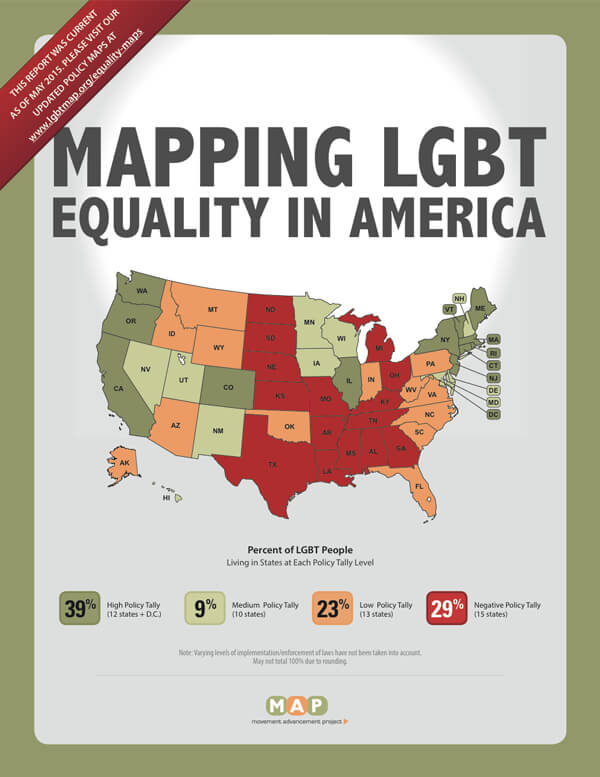The Bottom Line
Mapping LGBT Equality in America sets out to identify and explain the key gaps in legal equality for LGBT Americans by introducing the major state and local laws and policies that protect or harm LGBT people, providing a breakdown of those laws and policies by state, and showing how protections for LGBT Americans vary based on sexual orientation and gender identity and expression.
Mapping LGBT Equality in AmericaDownload
Recommended citation:
Movement Advancement Project. May 2015. Mapping LGBT Equality in America. https://www.lgbtmap.org/mapping-lgbt-equality (date of access).
In this rapidly changing legal landscape, the Movement Advancement Project maintains LGBT Equality Maps, which track LGBT equality, populations, and other data by state. The maps are updated daily as changes in law, policy, and legislation occur. All Equality Maps, including high-resolution JPEG versions, are available for publication. The LGBT Equality Maps allow websites to embed the maps easily and for free. Visit lgbtmap.org/equality-maps to learn more.


